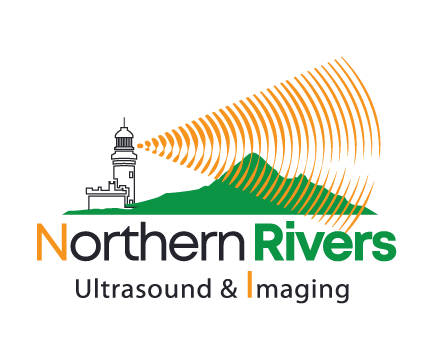Breast Ultrasound
Ultrasound imaging, also called ultrasound scanning or sonography, involves exposing part of the body to high-frequency sound waves to
produce pictures of the inside of the body. Ultrasound exams do not use ionizing radiation (as used in x-rays). Because ultrasound images are captured in real-time, they can show the structure and movement of the body's internal organs, as well as blood flowing through blood vessels.
Ultrasound imaging is a noninvasive medical test that helps physicians diagnose and treat medical conditions.
Ultrasound imaging of the breast produces a picture of the internal structures of the breast.
Doppler ultrasound is a special ultrasound technique that evaluates blood velocity as it flows through a blood vessel, including the body's major arteries and veins in the abdomen, arms, legs and neck.
During a breast ultrasound examination the sonographer or physician performing the test may use Doppler techniques to evaluate blood flow or lack of flow in any breast mass. In some cases this may provide additional information as to the cause of the mass.

Determining the Nature of a Breast Abnormality
The primary use of breast ultrasound today is to help diagnose breast abnormalities detected by a physician during a physical exam (such as a lump or bloody or spontaneous clear nipple discharge) and to characterize potential abnormalities seen on mammography.
Ultrasound imaging can help to determine if an abnormality is solid (which may be a non-cancerous lump of tissue or a cancerous tumor) or fluid-filled (such as a benign cyst) or both cystic and solid. Ultrasound can also help show additional features of the abnormal area.
Doppler ultrasound is used to assess blood supply in breast lesions.
Supplemental Breast Cancer Screening
Mammography is the only screening tool for breast cancer that is known to reduce deaths due to breast cancer through early detection. Even so, mammograms do not detect all breast cancers. Some breast lesions and abnormalities are not visible or are difficult to interpret on mammograms. In breasts that are dense, meaning there is a lot of glandular tissue and less fat, many cancers can be hard to see on mammography.
Many studies have shown that ultrasound and magnetic resonance imaging (MRI) can help supplement mammography by detecting small breast cancers that may not be visible with mammography. Supplemental screening ultrasound is usually only considered for women at high risk for breast cancer when the breast tissue is dense. When ultrasound is used for screening, many abnormalities are seen which may require biopsy but are not cancer (false positives), and this limits its cost effectiveness.
Today, ultrasound is being investigated for use as a screening tool for women who:
◦ are at high risk for breast cancer and unable to tolerate an MRI examinations.
◦ are at intermediate risk for breast cancer based on family history, personal history of breast cancer, or prior biopsy showing an abnormal result.
◦ have dense breasts.
◦ have silicone breast implants and very little tissue can be included on the mammogram.
◦ are pregnant or should not to be exposed to x-rays (which is necessary for a mammogram).
◦ are at high risk for breast cancer based on family history, personal history of breast cancer, or prior atypical biopsy result.
Several types of automated devices have been developed for whole breast ultrasound. Further evaluation of such approaches is needed.
Ultrasound-guided Breast Biopsy
When an ultrasound examination cannot characterize the nature of a breast abnormality, a physician may choose to perform an ultrasound-guided biopsy. Because ultrasound provides real-time images, it is often used to guide biopsy procedures.
You will be asked to undress from the waist up and to wear a gown during the procedure.
You will lie on your back with your arm raised above your head on the examining table.
A clear water-based gel is applied to the area of the body being studied to help the transducer make secure contact with the body and eliminate air pockets between the transducer and the skin. The sonographer (ultrasound technologist) or radiologist then presses the transducer firmly against the skin and sweeps it over the area of interest.
Doppler sonography is performed using the same transducer.
When the examination is complete, the patient may be asked to dress and wait while the ultrasound images are reviewed. However, the sonographer or radiologist is often able to review the ultrasound images in real-time as they are acquired and the patient can be released immediately.
This ultrasound examination is usually completed within 30 minutes.
Most ultrasound examinations are painless, fast and easy.
After you a repositioned on the examination table, the radiologist or sonographer will apply some warm water-based gel on your skin and then place the transducer firmly against your body, moving it back and forth over the area of interest until the desired images are captured. There is usually no discomfort from pressure as the transducer is pressed against the area being examined.
If scanning is performed over an area of tenderness, you may feel pressure or minor pain from the transducer. If a Doppler ultrasound study is performed, you may actually hear pulse like sounds that change in pitch as the blood flow is monitored and measured.
You may be asked to change positions during the exam. Once the imaging is complete, the gel will be wiped off your skin.
After an ultrasound exam, you should be able to resume your normal activities within a few hours.
A radiologist, a physician specifically trained to supervise and interpret radiology examinations, will analyze the images and send a signed report to your physician who referred you for the exam, who will share the results with you. In some cases the radiologist may discuss results with you at the conclusion of your examination.
All the above material is sourced from RSNA and if fully copyrighted Copyright © 2010 Radiological Society of North America, Inc. (RSNA)




